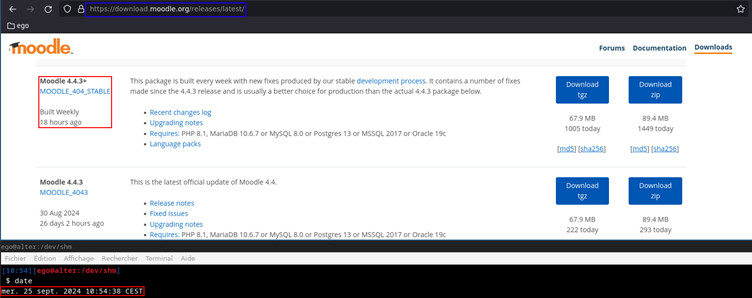

A recent security audit has uncovered critical vulnerabilities within Moodle, the widely used open-source learning management system (LMS).
These vulnerabilities allow attackers to evade core security mechanisms and potentially exploit systems via Server-Side Request Forgery (SSRF).
The flaws center around a subtle but impactful Time-of-Check to Time-of-Use (TOC-TOU) bug that affects all Moodle features that accept user-supplied URLs.
This bug puts millions of educational and organizational Moodle instances at risk, particularly those hosted on cloud platforms like AWS.
The vulnerabilities were discovered in Moodle version 4.4.3, the latest stable release at the time of the audit.


As per a report by QuarksLab, Researchers found that Moodle’s process for validating URLs provided by users suffers from a logical flaw. This bug allows attackers to bypass SSRF restrictions and target internal network resources.
The problem arises due to a separation between the DNS resolution (checking the hostname against a blocklist) and the actual network request.
An attacker can manipulate DNS responses between these two steps, causing Moodle to believe a URL is safe during the check, but then making the actual request point to a forbidden address, such as localhost or sensitive AWS metadata endpoints.
Example Attack Scenario
The attack chain leverages Moodle’s Calendar synchronization and File Picker features, which allow users to import external resources via URLs. Here’s how the exploit works:
Relevant Moodle Code Excerpt
// Simplified code highlighting the TOC-TOU bug
$formdata = $form->get_data(); // User-controlled data
// ...URL validation chain...
$curl = new curl();
$response = $curl->get($user_supplied_url);In-depth check bypass:
function url_is_blocked($url) {
$host = gethostbynamel(parse_url($url)['host']);
// Check if $host is in blocklist
// Time passes...
// Later, curl_exec() is called, which re-resolves the host
}Proof of Concept: Malicious DNS Server
A Python-based DNS server can be deployed to manipulate responses based on the request order, enabling the attacker to return a benign IP during the initial check and a target IP (e.g., 127.0.0.1) during the fetch.
# PoC DNS server snippet
TOC_TOU_CHECK = 0
def resolve_domain(name):
global TOC_TOU_CHECK
TOC_TOU_CHECK += 1
if TOC_TOU_CHECK % 2 == 0:
return "127.0.0.1"
else:
return "203.0.113.1" # benign IPImpact and Recommendations
Moodle’s TOC-TOU vulnerability vividly underscores the complexities and dangers of SSRF, especially in environments handling sensitive educational data.
Institutions and organizations should prioritize this and harden their deployments until official patches are released. Regular security audits and vigilant monitoring remain indispensable in today’s threat landscape.
Find this News Interesting! Follow us on Google News, LinkedIn, & X to Get Instant Updates!
Cisco Talos has uncovered active exploitation of a zero-day remote-code-execution vulnerability, identified as CVE-2025-0994, in…
The Foundation for Defense of Democracies (FDD) and cybersecurity firm TeamT5 has exposed an intricate…
A sophisticated social engineering campaign that leverages the viral power of TikTok to distribute dangerous…
Halo Security, a leading provider of attack surface management and penetration testing services, today announced it has successfully…
Socket's Threat Research Team, a series of malicious npm packages have been found lurking in…
Datadog Security Research has uncovered a targeted malware campaign aimed at Solidity developers on Windows…